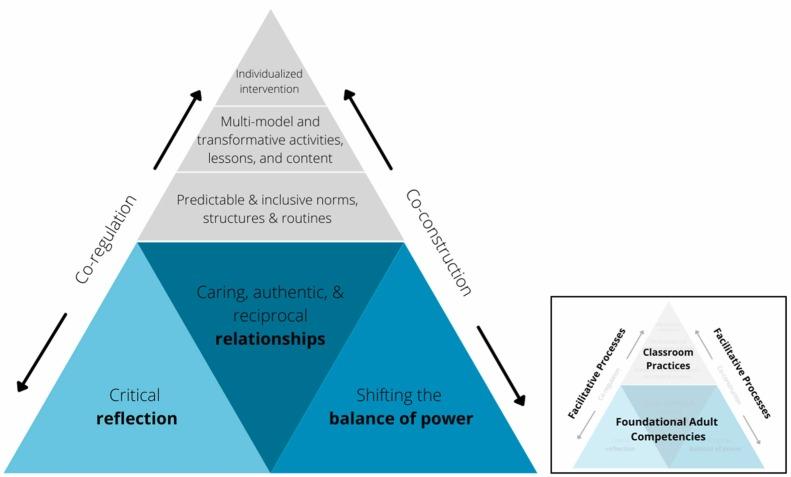10 Key Future Directions for SEL in Schools: Innovations and Trends Shaping Student Success
Social and Emotional Learning (SEL) is at the heart of modern education, empowering students with crucial life skills such as empathy, self-awareness, responsible decision-making, and emotional regulation. As education evolves to meet the demands of the 21st century,the importance of SEL in schools continues to grow. In this article, we’ll explore the future directions for SEL, highlighting the latest innovations, trends, and best practices that are shaping student success worldwide.
Why SEL Matters in Today’s Schools
SEL is more than just a buzzword. Research has shown that effective social and emotional learning programs improve academic achievement, decrease emotional distress, and foster a positive school climate. As we look to the future,implementing innovative SEL approaches is crucial for preparing young people to succeed in a rapidly changing world.
- Enhances academic performance and motivation
- Reduces anxiety, depression, and behavioral issues
- Fosters better relationships among peers and teachers
- Supports equitable and inclusive learning environments
10 Key Future Directions for SEL in Schools
-
1. Technology-Driven SEL Tools
The integration of technology in education has transformed SEL delivery. AI-powered platforms,mobile apps,and digital games are making SEL accessible,interactive,and personalized. These tools provide real-time feedback, gamify learning experiences, and offer data-driven insights for teachers and students alike.
-
2. Culturally Responsive SEL programs
the future of SEL emphasizes cultural responsiveness, ensuring programs reflect diverse backgrounds, identities, and experiences. Culturally inclusive SEL curricula foster empathy and global citizenship, preparing students to thrive in multicultural societies.
-
3. Trauma-Informed SEL Practices
Increasing awareness of childhood trauma has driven the adoption of trauma-informed SEL. These practices acknowledge the impact trauma has on learning and behavior, integrating support strategies to create safe, nurturing school environments.
-
4. SEL Integration Across the Curriculum
Future SEL initiatives will go beyond standalone lessons—embedding social and emotional learning principles into core subjects like math, science, and literacy. This holistic approach makes SEL an everyday part of school life, reinforcing skills across disciplines.
-
5. Whole-School and Community Approaches
Schools are partnering with families, local organizations, and community leaders to promote SEL beyond the classroom. Collaborative models engage all stakeholders, ensuring consistent and supportive environments for students’ emotional growth.
-
6. SEL for Educators: Professional learning and Wellbeing
The future of SEL recognizes the well-being of educators as a priority. Professional growth programs now include SEL training, stress management techniques, and self-care practices, helping teachers model social-emotional competencies for their students.
-
7. Data-Driven SEL Assessment
Innovative assessment tools are enabling schools to measure SEL competencies, track progress, and personalize instruction. Ethical data collection ensures privacy while providing valuable insights for program advancement.
-
8. student-Led SEL Initiatives
Youth voice is gaining prominence in SEL. Student councils and peer-led campaigns encourage leadership, collaboration, and advocacy, helping students take ownership of their social and emotional development.
-
9. Integration with mental Health Supports
The convergence of SEL and mental health services is a critical trend. School counselors, psychologists, and educators are working together to identify needs early and provide complete support networks for students.
-
10. Preparing Students for a Changing Workforce
Employers increasingly value SEL skills such as adaptability,problem-solving,and teamwork. Forward-thinking education systems are aligning SEL with career and workforce development, ensuring students are job-ready and resilient.
Benefits of Embracing Future SEL Trends
- Improved Academic Outcomes: SEL supports cognitive development and classroom engagement, boosting grades and graduation rates.
- Enhanced Emotional intelligence: Students learn to manage stress, resolve conflicts, and empathize with others.
- Equity in Education: inclusive SEL practices address equity gaps and create welcoming schools for all learners.
- Mental Health Support: Early interventions promote resilience and prevent escalation of mental health challenges.
- Life and Career Readiness: Skills developed through SEL prepare students for future academic, social, and professional success.
Practical Tips for Schools Implementing Future-Ready SEL
- involve the whole school community – Engage families,local leaders,and community partners in SEL planning and delivery.
- Use data wisely – Select assessment tools that offer meaningful insights without overburdening staff or invading privacy.
- Prioritize professional development – Invest in SEL training for both teachers and administrators to build leadership capacity.
- Ensure inclusivity – Tailor programs to reflect the diversity of the school population and address equity concerns.
- Encourage student voice – Create opportunities for students to lead, collaborate, and share their experiences related to social-emotional growth.
Case Study: Leading the Way in SEL Innovation
Consider Oakwood Middle School, a pioneering institution in SEL integration. By adopting technology-enhanced SEL platforms, aligning curriculum with trauma-informed practices, and establishing strong partnerships with local businesses, Oakwood reported:
- A 30% reduction in behavioral incidents
- Higher student engagement and attendance rates
- Positive feedback from families and community stakeholders
- Improved teacher wellbeing and retention
This case underscores the transformative power of future-focused SEL initiatives in shaping lasting student success.
First-Hand Experience: An Educator’s Viewpoint
“When we began to embed SEL across every subject and involved our local community, we saw students come alive in new ways. They were more confident, empathetic, and eager to learn—not just for exams, but for life.”
– Sarah Liu, 5th Grade Teacher and SEL Coordinator
Conclusion: Shaping the Future of Student Success through SEL
The future of Social and Emotional Learning in schools promises innovation, personalization, and profound positive impact on student outcomes. By embracing these key future directions for SEL, educators and stakeholders can create nurturing, equitable, and effective learning environments that prepare every student for academic achievement, emotional wellness, and real-world success. Keep exploring new trends, leverage technology, involve your community, and most importantly—make SEL an everyday priority in your school’s culture.

